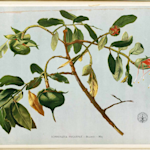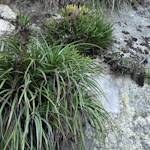Western Prairie Fringed Orchid
2020 CE • Midwestern United States
"The Western Prairie Fringed Orchid (Platanthera praeclara) is one half of a unique symbiotic relationship occurring in the tall, grass meadows of the Midwestern United States. Releasing its fragrance only in the evening, the orchid relies on Hawkmoths for pollination. It can be found in moist, native, tall grass meadows in Midwestern United States, and into Canada. There are 172 known populations, of which only 4 have numbers greater than 1,000 plants. The orchid is considered threatened in all states with known populations. The decline of the Western Prairie Fringed Orchid is yet another victim of the continued development of untouched, native lands. Past and present farming practices have cleared vast areas of native tallgrass prairie, fragmenting the populations of orchids into smaller and smaller patches of suitable habitat. This has decreased the ability of the hawkmoth to provide the necessary pollination needed for the orchids survival. Herbicide and pesticide use in farming can also lead to a downfall in orchid populations. Other factors contributing to the decline of the orchid include overgrazing, collecting, fire and hay mowing."
"Western Prairie Fringed Orchid," Endangered Species Coalition.
Image: Tony Ernst via Flickr, CC BY-NC-SA 2.0 DEED Attribution-NonCommercial-ShareAlike 2.0 Generic


Learn about Maya Lin’s fifth and final memorial: a multi-platform science based artwork that presents an ecological history of our world - past, present, and future.

Discover ecological histories and stories of former abundance, loss, and recovery on the map of memory.

Learn how we can reduce our emissions and protect and restore species and habitats – around the world.

See how art can help us rethink the problems we face, and give us hope that each one of us can make a difference.

Help make a global memorial something personal and close to home. Share your stories of the natural world.


